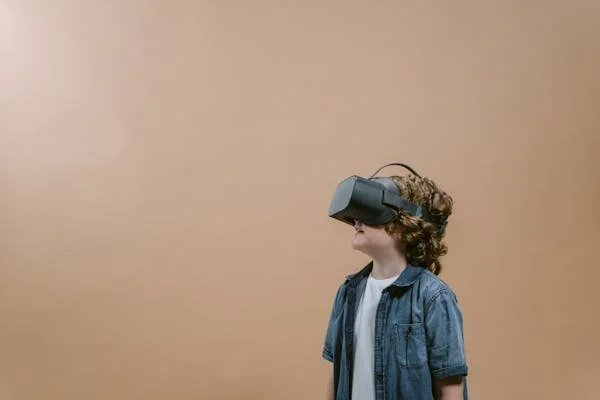Introduction:
If you’re a VR developer using Unity 2022.3 Oculus Link Constant Hourglass Windows 11 Fix machine, you might encounter a frustrating issue: the constant hourglass icon. This visual indicator, which usually suggests the system is processing or loading, can remain indefinitely, making it impossible to continue development or test VR applications.
This blog post delves into the causes behind the hourglass problem and offers a series of practical solutions to resolve it. We will discuss everything from software updates to USB connection troubleshooting, ensuring that you can get back to creating immersive VR experiences without interruption.
Understanding the Root Causes of the Hourglass Issue
Before diving into potential solutions, it’s crucial to understand the common causes of the hourglass icon on Unity 2022.3, Oculus Link, and Windows 11. This problem can arise from several sources, all of which require specific approaches to fix.
1. Software Compatibility Issues
When you’re using multiple pieces of software—like Unity, Oculus, and Windows—it’s essential that all components are compatible. Any discrepancies in version numbers or system requirements can cause conflicts that result in performance issues like the hourglass icon.
2. Outdated Graphics and USB Drivers
One of the most common reasons for Oculus Link to malfunction, including causing the hourglass issue, is outdated drivers. The graphics card driver and USB drivers play a significant role in VR development and can disrupt communication between the Oculus headset and your PC if not updated regularly.
3. USB Connectivity Problems
The connection between your Oculus headset and your computer is another key factor. A faulty or incompatible USB cable, or using a USB hub instead of a direct port, can slow down data transfer and cause the hourglass icon to appear.
4. Incorrect Unity Project Settings
Unity’s settings, particularly those related to virtual reality rendering, can also contribute to the hourglass problem. If your VR settings are misconfigured, the project may fail to load properly, causing the system to hang.
Step-by-Step Troubleshooting Solutions
1. Update Software and Drivers
To begin addressing the hourglass issue, it’s crucial to update all relevant software:
a. Updating Unity 2022.3
Unity regularly releases updates that improve compatibility with VR devices like the Oculus Rift. Head over to the Unity Hub, and make sure that you are using the most recent version of Unity 2022.3. Updating will not only help fix bugs but also provide support for the latest VR technologies.
b. Updating Oculus Software
Ensure that your Oculus software is up to date. Launch the Oculus desktop application and go to Settings > About, then click Check for Updates. Keeping the Oculus software updated is crucial for maintaining stability in Unity VR development.
c. Updating Windows 11
Microsoft’s Windows 11 is still evolving, with frequent updates to improve performance and compatibility with VR headsets. Head to Settings > Update & Security to check for pending Windows updates. Make sure all system updates are installed.
d. Updating Graphics Card and USB Drivers
Graphics drivers are a critical component for VR development. For Oculus, it’s important to have the latest NVIDIA or AMD drivers installed. Similarly, USB drivers are necessary for stable communication between the Oculus headset and your PC. These can be updated via the device manager or by visiting the manufacturer’s website.
2. Optimize USB Connectivity
The USB connection is essential for Oculus Link to function properly. Any issues here can cause delays and the hourglass icon to appear. To optimize your USB setup:
a. Use the Correct Cable
It’s recommended to use the official Oculus Link cable, which is specifically designed to provide the required data transfer speeds for VR. If you choose to use a third-party USB cable, ensure it supports USB 3.0 or higher.
b. Direct Connection to the PC
Avoid using USB hubs or adapters. A direct connection to a USB 3.0 or USB 3.1 port on your computer ensures a more stable connection between the Oculus headset and the PC.
c. Test Different USB Ports
If you continue to experience issues, try connecting the Oculus headset to a different USB 3.0 port on your PC. Sometimes specific ports may not provide the necessary power or data bandwidth.
3. Adjust Unity Project Settings
Misconfigured Unity settings could be a major contributor to the constant hourglass issue. Here are some settings to review:
a. XR Plugin Management
In Unity 2022.3, the XR Plugin Management system handles VR integration. To access it, go to Edit > Project Settings > XR Plug-in Management. Ensure that Oculus is selected as your VR device.
b. Virtual Reality Rendering Pipeline
Check the graphics settings for VR. Unity supports multiple rendering pipelines, and for Oculus devices, the Universal Render Pipeline (URP) is recommended. Go to Edit > Project Settings > Graphics to ensure that the correct rendering pipeline is selected.
c. Player Settings
4. Reset Oculus Software
If you’ve updated all the software and settings and the issue persists, try resetting the Oculus software:
a. Factory Reset Oculus
In the Oculus desktop app, go to Settings > Device and select Reset. This will reset the Oculus software to its default settings, eliminating any misconfigurations that might be causing the issue.
b. Reinstall Oculus Software
As a last resort, consider uninstalling and reinstalling the Oculus software. This can fix deep-rooted software issues that might not be resolved through updates or resets.
Preventive Measures to Avoid Future Issues
Once you’ve resolved the hourglass issue, it’s essential to take steps to prevent it from reoccurring.
1. Regularly Update Your Software
By staying up to date with Unity, Oculus, and Windows 11 updates, you’ll reduce the likelihood of encountering compatibility issues that could cause the hourglass problem.
2. Maintain Your Hardware
Keep your hardware in good condition, and make sure your PC meets the recommended specifications for VR. Periodically check your USB cables, ports, and the Oculus Link cable to ensure they are functioning properly.
3. Use Task Management Tools
When running VR projects, minimize background processes that consume CPU or RAM. Use Task Manager on Windows 11 to close unnecessary applications, ensuring that Unity and Oculus have enough resources to operate smoothly.
4. Check for Oculus Firmware Updates
Oculus regularly releases firmware updates for the headset. To check for updates, go to Settings > Device in the Oculus desktop app and ensure your device is running the latest firmware.
Conclusion
The constant hourglass issue when using Unity 2022.3 Oculus Link Constant Hourglass Windows 11 can be a frustrating roadblock for developers, but with the right approach, it can be resolved. By updating your software, optimizing USB connections, adjusting Unity settings, and following preventive measures, you can maintain a smooth VR development environment.
Staying on top of software updates and hardware maintenance will go a long way in preventing future issues. If the problem persists despite following these steps, it may be worthwhile to contact Oculus Support or consult Unity’s developer community for additional troubleshooting.
FAQs
What is the main cause of the hourglass issue in Unity 2022.3 with Oculus Link?
The main causes are software incompatibility, outdated drivers, faulty USB connections, or incorrect Unity settings.
How do I update the Oculus firmware?
Open the Oculus app, go to Settings > Device, and check for updates.
Why does Unity 2022.3 have issues with Oculus Link?
Unity settings, outdated drivers, or incompatible versions of Oculus software and Windows 11 may cause issues.
What USB cable should I use for Oculus Link?
Use the official Oculus Link cable or a certified USB 3.0/3.1 cable for optimal performance.
Can Windows 11 updates cause issues with Oculus Link?
Yes, Windows 11 updates may introduce compatibility issues that cause VR problems. Always ensure your PC is updated and compatible.
What should I do if the hourglass issue persists?
Try reinstalling Oculus software, resetting your device, or seeking assistance from Oculus Support.





